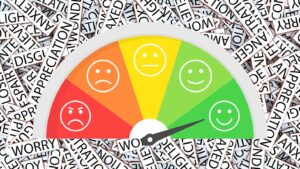Improve Your Site’s Search Ranking in 8 Steps: A DIY Guide

If you’re striving to get your website’s search ranking to the same level of success as top digital marketing professionals but prefer to take a do-it-yourself approach, you’re in luck! This ultimate search engine optimisation (SEO) guide to improving websites’ search ranking is for you. Throughout the guide are the exact same strategies, tools and resources that the topmost digital marketing experts use to boost their client’s website visibility and attract more organic traffic.
As you work through the steps, you will access the same insights and knowledge that successful marketing professionals use to stay ahead of the competition and drive measurable results for their clients or business. Whether you’re an experienced marketing professional or a business owner, this guide’s proven strategies and tactics will help you achieve your desired search ranking success.
Step 1: Conduct Keyword Research
To improve your website search ranking, you need to identify the specific words and phrases people use to search for information related to your business or industry. This process is known as keyword research and is a foundational step towards achieving better search engine visibility. Several tools, such as Google Keyword Planner, Ahrefs, or SEMrush, can help you conduct thorough keyword research.
Read Top 10 Keyword Research Tools.
Here are some steps to get started with your keyword research:
- Make a list: Brainstorm a list of valuable keywords and phrases related to your business or industry.
- Use keyword research tool: Identify each keyword’s search volume and competition level using a keyword research tool.
- Hierarchise your keywords: Identify your business’s most relevant and high-value keywords, and prioritise them in your content optimisation efforts.
- Keyword rankings: Use Google Search Console and Google Analytics to keep track of your website’s search ranking for your target keywords over time. Also, for information on your website’s search performance, including the keywords people use to find your site and any errors that might impact your search rankings.
If you run a pet store, for example, some relevant keywords might include “pet food,” “dog toys,” or “cat supplies.”
Step 2: Optimise Your Website Content
Optimising website content refers to the process of improving the quality and relevance of website content to increase its visibility and ranking in search engine results pages (SERPs). One aspect of optimising website content involves using target keywords in strategic places throughout the website. This means including relevant keywords and phrases that potential visitors might use to search for information related to the website’s topic.
By incorporating these keywords in the right places, such as the page title, headings, meta descriptions, and within the content itself, search engines can better understand the website’s relevance and purpose, leading to higher search rankings in search results for those specific keywords.
However, using keywords naturally and meaningfully and avoiding keyword stuffing is important, which can negatively impact search engine rankings. Here are some key areas to focus on:
- Page titles and headlines: Include your target keywords in the title of each page or post headline.
- Meta descriptions: Write a compelling meta description for each page, including your target keywords and a call to action.
- Headings: Use headings (H1, H2, H3, etc.) to break up your content and include your target keywords in the headers.
- Body copy: Use your target keywords throughout the body of your content, but be sure to write naturally and avoid keyword stuffing. Content quality and relevance are vital for the best results.
So if you’ve decided that your target keyword is “dog food,” you might utilise it as follows;
- Page title: “Best Dog Food for Your Pup”,
- Meta description: “Get your furry friend the best dog food around!”,
- Header: “Why Our Dog Food is the Best Choice for Your Pet”, and
- Body copy: “Our dog food is made with all-natural ingredients to keep your pup healthy and happy.”
Step 3: Improve Your Website Structure
Search engine crawlers or spiders use automated software programs to explore and analyse web pages on the internet. A well-structured website, with clear and concise navigation, logical URL structures, appropriate use of heading tags, and descriptive metadata, is easier for search engine crawlers to navigate and analyse its content. This makes it more likely that the search engine will understand the website’s purpose and relevance to users and can more easily index and rank its pages in search results.
Overall, a well-structured website can help improve a site’s search ranking by improving user experience, making it easier for search engines to crawl and index its pages, and ultimately improving its visibility in search results. Here are some tips for improving your website structure:
- Use a clear hierarchy of pages: Make sure your website has a clear structure that organises pages by topic and importance.
- Create a sitemap: A sitemap is a file that lists all the pages on your website and helps search engines understand your website’s structure.
- Use internal links: Include links to other pages on your website throughout your content to help search engines crawl and index your site.
For example, your website structure might include a homepage with links to different categories (e.g. dog food, cat supplies, etc.), and each category page might link to individual product pages.
Step 4: Build Quality Backlinks
Backlinks are links from one website to another. In the context of search engine optimisation (SEO), backlinks refer to links from other websites to your website. Backlinks are an important factor in search engine rankings because they are seen as a measure of a website’s authority and relevance.
When a website has many high-quality backlinks from other reputable websites, search engines view this as a signal that it is a valuable resource and may rank it higher in search results. The quality and relevance of the backlinks are also important, as links from low-quality or irrelevant websites can negatively impact a website’s search rankings.
Therefore, building high-quality backlinks from relevant and authoritative websites is key to a successful SEO strategy. Here are some tips for building quality backlinks:
- Guest blogging: Write articles for other websites in your industry that link back to your website.
- Broken link building: Find broken links on other websites in your industry, and suggest they replace them with links to your website.
- Influencer outreach: Reach out to influencers in your industry and ask them to share your content and link to your website.
For example, if you sell pet supplies, you might reach out to a popular pet blogger and ask if they would be interested in sharing your article on the best dog toys, with a link back to your website.
Step 5: Optimise for Local Search
Optimising your website for local search can help you attract more local customers to your physical location. This involves optimising your website and online presence to appear more prominently in local search results. Here are some tips for optimising for local search to increase your search ranking and reach to potential customers who are searching for your products or services in your local area.
- Claim your Google Business Profile: This free listing appears in Google Maps and local search results and improves your Google ranking.
- Include your address, phone number, and business hours on your website: Make sure this information is easy to find on your website so customers can quickly locate your store.
- Use local keywords: Include location-specific keywords in your content, such as the name of your city or neighbourhood.
- Get listed in local directories: Submit your business information to online directories like Business Directory and Yellow Pages.
If you run your pet store in Auckland, for example, you might include local keywords like “pet store in Auckland” or “dog toys in North Shore” in your content and meta descriptions, and make sure your Google My Business listing includes your store address, phone number, and hours of operation.
Step 6: Use Social Media
Social media engagement and activity can send positive signals to search engines about the website’s popularity and relevance. They can help increase website visibility and drive traffic to the site, indirectly improving search ranking. Here are some tips for using social media presence to ultimately drive traffic to the website and improve search engine rankings:
- Share your content: Post links to your website content on social media platforms like Facebook, Twitter, and LinkedIn.
- Engage with your audience: Respond to comments and messages, and build relationships with your followers.
- Use social media advertising: Paid ads on social media can help you reach a wider audience and drive more traffic to your site.
For example, if you run a pet store, you might share links to your blog articles on social media, post cute photos of pets to engage with your followers and run a Facebook ad campaign promoting your latest sale.
Step 7: Prioritise Technical SEO
Technical SEO is crucial to increase search ranking by optimising the technical infrastructure of a website. Technical SEO involves tasks such as improving website speed and performance, fixing errors, and ensuring proper indexing and crawling by search engine bots.
These technical optimisations help search engines access and understand your website better, which can ultimately improve the website’s search ranking. Here are some tips for using technical SEO to improve search ranking:
- Optimise for website speed: Website speed is a critical factor that affects user experience and search ranking. Therefore, website owners should optimise website speed by compressing images, minifying HTML, and enabling browser caching.
- Mobile optimisation: An increasing number of people use mobile devices to access the internet and search for information. Mobile optimisation helps ensure website visitors have a positive experience when using a mobile device, ensuring the website loads fast, is user-friendly and easy to navigate on smaller screens.
- Mobile-friendly structured data: Implementing mobile-friendly structured data can help search engines better understand the content on a mobile site.
Step 8: Continuously Improve Your Strategy
Search engine algorithms are constantly changing, so it’s important to continuously improve your SEO strategy to stay relevant and ahead of the competition. Here are some tips for staying up-to-date:
- Keep up with industry news: Follow industry blogs and news sources to stay up-to-date on the latest SEO trends and best practices.
- Experiment with new tactics: Test new SEO tactics and strategies to see what works best for your website and audience.
- Analyse your competition: Look at what your competitors do to improve their search ranking, and consider implementing similar tactics.
For example, you might experiment with new types of content, like videos or infographics, to see if they attract more traffic to your site. Or you might analyse your competitor’s backlink profile and try replicating some of their high-quality backlinks.
Improving a website for search ranking is an ongoing effort that requires continuous attention and effort. Search engine algorithms are constantly evolving, and new competitors are always entering the market, making it necessary to regularly review and update the website’s optimisation strategies.
Additionally, user behaviour and search trends are constantly changing, so it’s important to keep the website’s content and optimisation tactics relevant and up-to-date to maintain its search ranking position. Therefore, website owners must continually monitor and improve their website’s search ranking to stay ahead of the competition and remain visible to their target audience.
Never Miss a Thing!
Subscribe to our blog for the latest expert tips and digital marketing resources.





